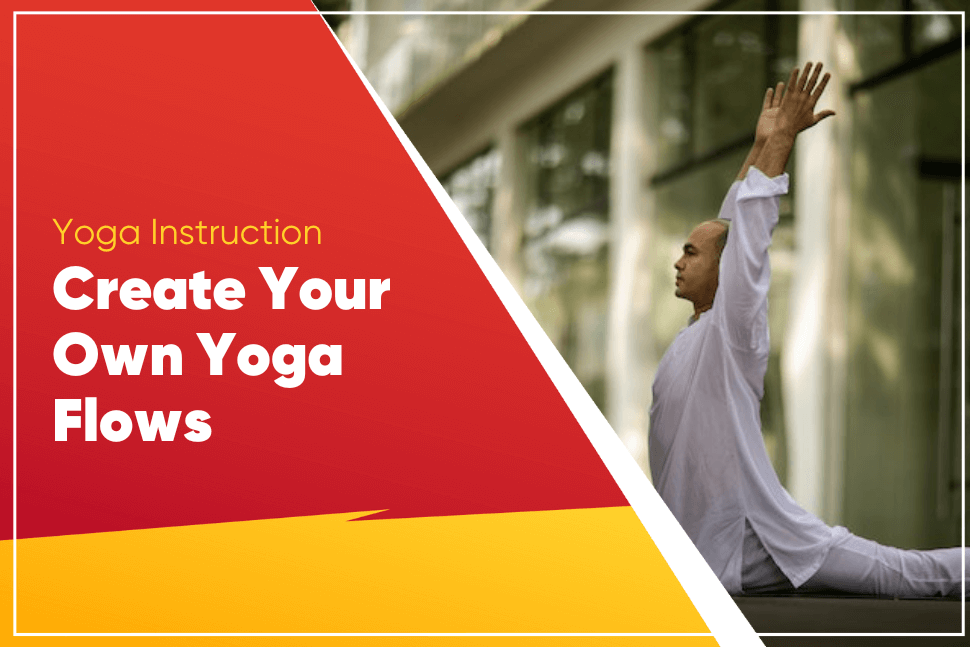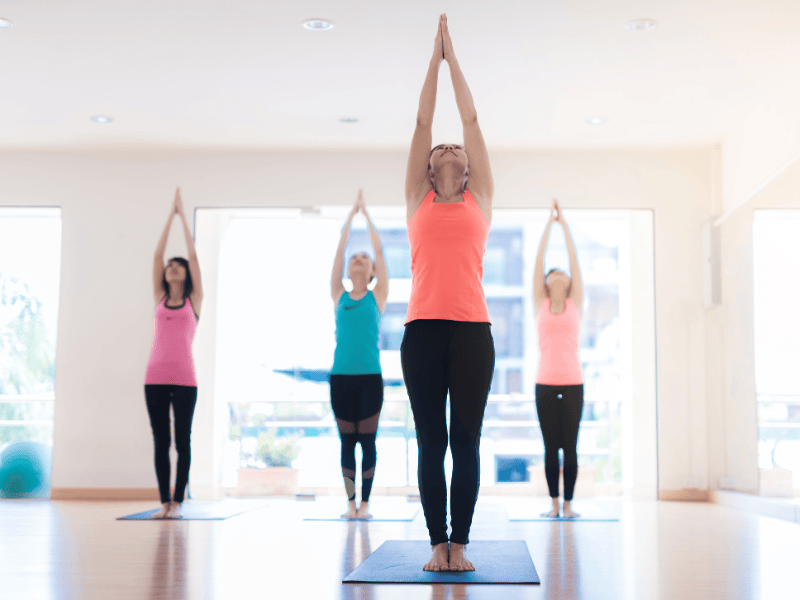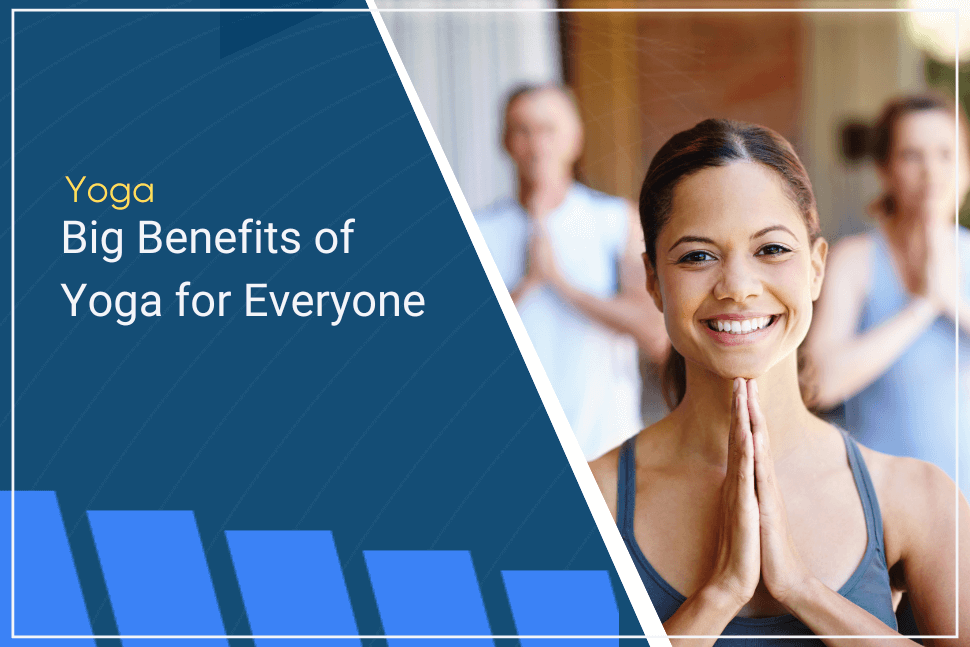How to Create Your Own Yoga Flows

When it comes to fitness classes, the routines are what make the experience for the students. Coming up with engaging routines is an art form for fitness instructors. Yoga flows are no exception. Learning how to create your own yoga flows helps you grow as a yoga instructor and set your classes apart from the competition.
How do you create your own yoga flows? Instructors will learn a lot about creating yoga flows during their training. However, it can take practice to truly master the art of creating a yoga flow. Over time, yoga instructors learn the best combinations of poses to develop classes that seamlessly flow to help their students reach their fitness and relaxation goals.
The types of poses used in each yoga class will depend on the style of yoga being taught. Some classes may hold poses for extended periods to focus on stretching and breathwork. Yoga classes that are geared more toward fitness may include bodyweight exercises like push-ups and squats. Students will expect the yoga flows to match the type of yoga class that they attend.
Components of a Great Yoga Sequence
You don’t need to follow this exact blueprint to have a phenomenal yoga class. These are just the most common components in most yoga classes. Factors that affect your yoga sequences include the length of the class, the style of yoga being taught, and the experience level of the students. Let's look at the basics of how to create a yoga flow.
Warm-Up
Regardless of the style or length of the yoga class, it is a good idea to always start with a warm-up period. Some of your students may be just waking up or have been sitting at a desk all day. A warm-up allows them to ease their body into the class.
Since mindfulness is a large part of yoga, some instructors like to include a thoughtful opening statement or greeting. This helps put students in the right headspace to begin the class with the right intention. Many instructors include some light breathwork or grounding practices as well.
Most importantly, a warm-up is done slowly. The goal is to ease the students into the class by gently warming up their muscles and calming their minds. The warm-up sets the tone for the rest of the class.
Sun Salutations
Sun salutations are common yoga flows that are incorporated into many classes. The salutations have a few variations but follow the same circular pattern. Typically, the salutation includes reaching upward, bending over, walking into a plank, lifting into cobra pose, pushing back into downward-facing dog, walking back into a forward bend, and then standing up.
Sun salutations are almost always included in vinyasa yoga classes, but they are frequently found in other kinds of yoga classes as well. The flow not only warms up the body and provides a good workout, but it also helps students to tie breathing to movement. It may seem redundant, but repetition is used to encourage the mind, body, and spirit to flow as one.
Some yoga instructors also like to include moon salutations in their classes. Where the sun salutations are warming and energizing, moon salutations are used to cool down the body and calm the central nervous system. Moon salutations can be used as part of the cool down or included in relaxing yoga classes.
Balance Poses
After a warm-up (and possibly sun salutations), the body is now ready to move into more challenging poses. Most yoga classes include balance poses. Oftentimes, balance poses are held for longer durations, engaging the slow-twitch muscle fibers in the body.
Balance poses can be challenging on the body as fatigue sets in during extended holds. This challenge is not just physical though, students must use their mental toughness and controlled breathing to maintain the poses.
Look at the warrior poses, lunges, and one-legged poses to include balance work into your yoga flows. Most of these poses have several variations so there is an option for every level of student.
Seated Poses
Seated poses can be included to serve multiple purposes. They can help students cool down after more strenuous poses or they can be used for a relaxing class. These poses are done while seated or lying down.
Like balance poses, seated poses are often held for longer periods. Instructors use this time to allow students to do breathwork or push deep into a stretch. Studies have shown that static stretching is most effective in increasing flexibility when poses are held for at least 30 seconds.
Savasana
Savasana, or corpse pose, is frequently included at the end of a yoga flow. Students will lay on their backs with their arms and legs comfortably straightened and relaxed. The goal of the pose is to achieve complete physical relaxation.
Depending on the style of yoga and the goal of the class, some instructors like to include a thought-provoking topic or meditation during this time. Others prefer to practice the pose in complete silence or with gentle music.

Organizing a Yoga Flow
There are a few things to consider when putting together the order of poses for your yoga flow. Many classes follow the same format: warm-up, salutations, challenging poses, and cool-down. However, there are other considerations to make.
Breathwork
Breathing is an integral part of yoga. Breathwork has been shown to help relax the body both mentally and physically. By focusing on their breath as they work through a yoga flow, students can keep their minds on their bodies instead of outside worries.
When creating your yoga flow, think about how the breath changes with certain movements. More physical classes or faster flows will increase breathing. Long stretches in seated poses will decrease breathing. The types of poses and the speed of the flow will impact breathing.
There are different breathing patterns that instructors can include intentionally in their yoga flows. For example, box breathing (breathe in for 4 seconds, hold for 4 seconds, breathe out for 4 seconds, hold for 4 seconds) is simple and effective for calming the body and mind.
Theme
Choosing a theme for your class makes it easier for you to determine which poses to include in the flow. Additionally, it can make the class unique and interesting for the students.
Themes can be thoughtful and yoga related. For example, the theme “flow” could have pose combinations instead of holds and the instructor can discuss how water flows, breathe flows, and stress flows.
Alternatively, the theme can be more playful as well. Holidays are a great time to include a fun theme that allows students to dress up or get in the spirit. For example, a Valentine's Day yoga flow sequence could include pink decor, romantic music, and love-related poses.
Peak Posture
Some yoga instructors like to work up to a challenging pose or peak posture. This is considered the climax of the class and occurs before the cool-down. The warm-up and initial poses should get the students ready to take on the challenging posture.
The instructor can pair the peak posture with the theme of the class. For example, if the theme is living a balanced life, then the challenging pose can be a standing balance posture.
Goal of the Class
Different classes have different intentions. These will be partially determined by the style of the yoga being taught. Some classes are helping students get stronger, some are helping students relax, and some are doing both.
Consider the goal of the class when choosing your poses. Repeated sun salutations may not be the best choice for a relaxing evening class. Additionally, power yoga and hot yoga tend to put more emphasis on strength-building poses over deep stretches.
Frequently Asked Questions
Can I follow a pre-made yoga flow?
There are tons of pre-made yoga flows available. If you are working at a larger yoga studio, one instructor may be in charge of creating the flows. In that case, all instructors would teach the same flow throughout the day or for certain classes.
You may also find yoga flows and classes available for purchase from other instructors. This is a nice option for newer instructors. However, individuality and creativity are what help set an instructor apart from the rest. Using someone else’s yoga flows does not give your class the personal touch.
Are yoga flows written down or in your head?
It depends. Some instructors, especially those with years of experience, make up the flow as they are teaching the class. Advanced instructors can tailor each class to the students present. However, it can be easy to lose the flow and cohesiveness of the class this way.
It is more helpful to write up the flow as you create it. This way you can practice it before the classes and have a reference sheet during the class. Instructors can also reference old flows when needed.
Is it hard to create a yoga flow?
It can be hard for beginner instructors to create their own yoga flows. Since instructors have practiced many hours of yoga, it is easy to be influenced by the classes they've already taken. There is nothing wrong with taking inspiration from others when creating your own yoga flows.
Creating your own yoga flow will get easier with time and practice. Listen to feedback from your students and pay attention to which poses work well together.
Final Thoughts
When it comes to creating your own yoga flows, it is best to not overthink the process. Instructor training gives you all the knowledge and experience you need to effectively create your own yoga flows. Include poses that match the style of yoga you are teaching. Consider the goal of the class, the theme, and the breathwork to personalize your yoga flows even more. With time and practice, creating your own yoga flows will become second nature.
Gym management software that frees up your time and helps you grow.
Simplified billing, enrollment, student management, and marketing features that help you grow your gym or martial arts school.





